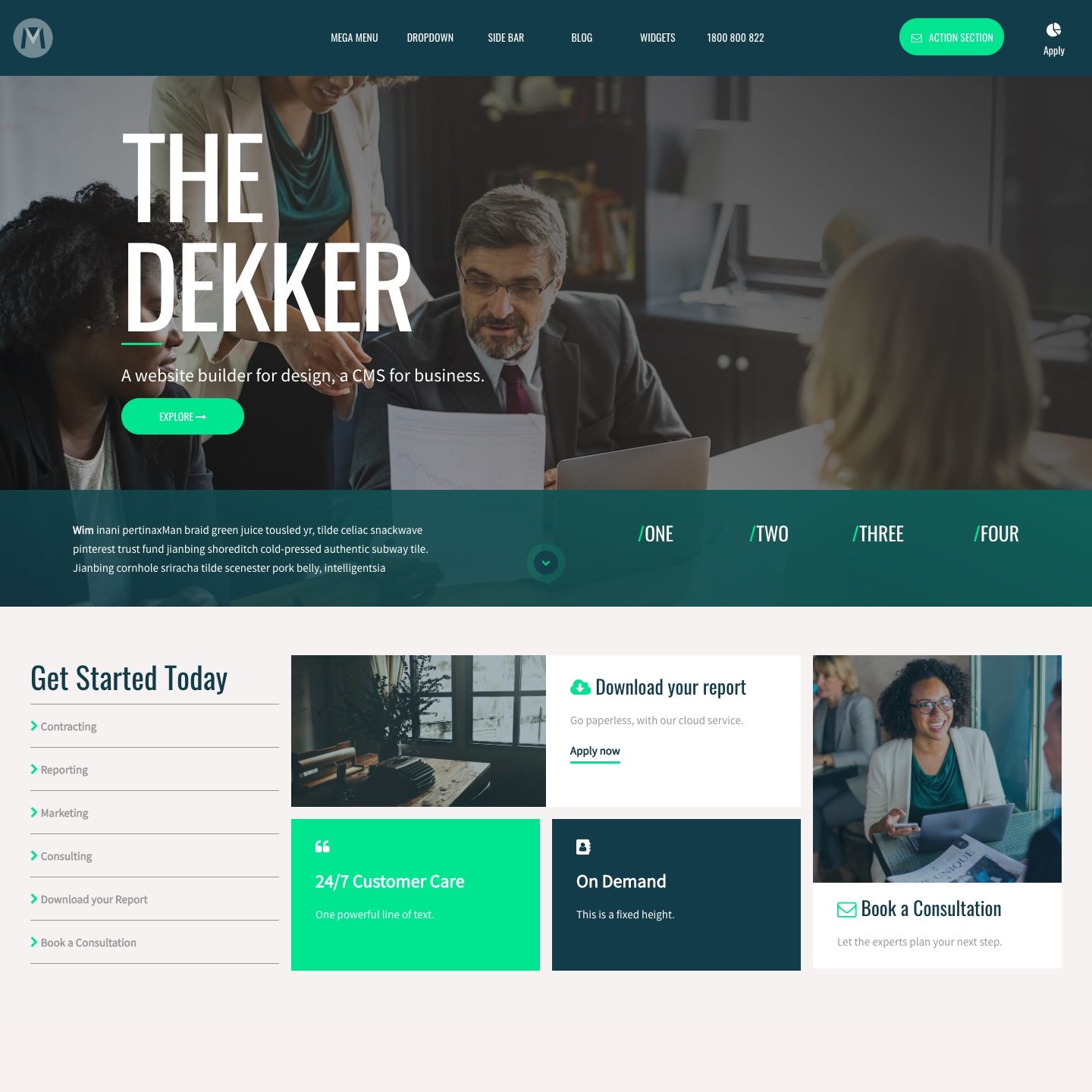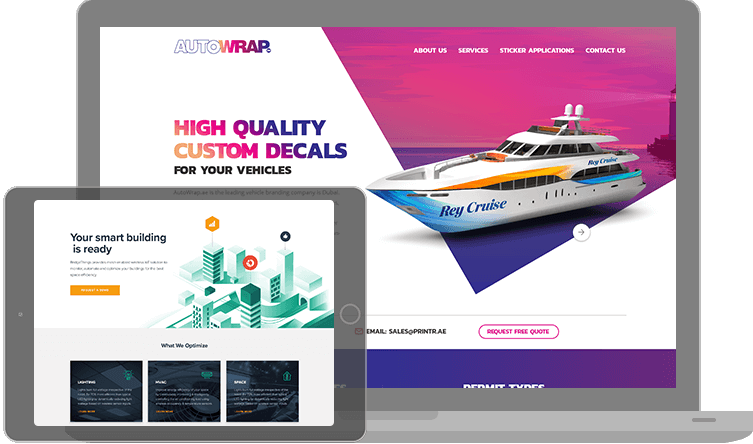Modern Website Design That Catches Interest and Transforms
In a significantly digital landscape, modern-day internet site layout has actually arised as a critical element in catching user focus and driving conversions. As we explore these necessary components, it becomes clear that comprehending their interplay can substantially influence an internet site's performance and user complete satisfaction.
Value of Visual Power Structure
Aesthetic hierarchy is a critical element in internet site design, as it guides individuals' interest and boosts their overall experience. By purposefully arranging web content, developers can direct users to the most vital info initially, thus raising interaction and boosting usability.
Integrating a rational flow in material setup is crucial; as an example, positioning one of the most vital info on top of a web page cultivates prompt recognition. Constant use of typography, such as varying font sizes and designs, aids establish a clear content structure. This organization not only aids in navigation but additionally develops count on, as individuals feel more comfy when they can easily find what they are searching for.
Ultimately, a well-executed visual pecking order not just improves visual charm but likewise considerably affects customer habits. By prioritizing crucial aspects and ensuring a smooth experience, designers can successfully convert site visitors right into consumers, reinforcing the value of this foundational style principle in modern site development.
Responsive Style for All Gadgets
Producing a seamless experience across different gadgets is important in today's digital landscape, where individuals accessibility websites from desktop computers, tablet computers, and mobile phones alike. Responsive design is a critical strategy that guarantees internet sites adapt fluidly to various display orientations, resolutions, and dimensions. By employing flexible grids, pictures, and CSS media inquiries, designers can create formats that maintain aesthetic honesty and performance, despite the tool being utilized.
The value of receptive style expands beyond appearances; it straight affects customer engagement and conversion rates. A site that works well on all tools encourages longer gos to and decreases bounce prices, as users are more probable to communicate with material that is simple to navigate. Search engines, especially Google, prioritize mobile-friendly websites in their rankings, making receptive design an essential part of search engine optimization (SEO)
Integrating responsive style not only boosts individual experience however likewise improves the growth procedure. By producing a single site that functions across tools, services can save time and resources compared to establishing different mobile and desktop versions. Ultimately, receptive design is a fundamental technique for contemporary website design, making sure accessibility and fulfillment for all individuals, no matter their device.
Engaging Interactive Components
While a responsive layout lays the foundation for a functional web site, including appealing interactive elements is essential for recording individual interest and cultivating much deeper links. Website Design. Interactive components, such as computer animations, quizzes, and clickable infographics, produce a much more vibrant customer experience, encouraging site visitors to invest more time on the website
Integrating interactive functions can also lead individuals with complicated information, making it much easier to digest content. Interactive sliders can illustrate product variations, while embedded videos can offer presentations or endorsements that resonate even more than static pictures or message. Additionally, gamification methods, like incentives for involving or finishing tasks with material, can boost individual inspiration and retention.
Efficient usage of interactive aspects not just enriches the user experience but can also lead to higher conversion rates. It is vital to stabilize interactivity with efficiency; excessively complicated features may hinder site speed, adversely influencing individual contentment.
Streamlined Navigating Practices
Reliable navigation is a foundation of any type of effective web site, as it straight influences user experience and content availability. Streamlined navigation methods make sure that users can easily find information, boosting their communication with the website. A well-structured navigation menu need to be instinctive and easy, generally featuring a minimal variety of key categories to prevent frustrating visitors.
To accomplish streamlined navigation, designers must prioritize a hierarchical structure that practically organizes material. Implementing breadcrumb trails can supply customers with context about their current place within the website, enabling for smooth backtracking. In addition, utilizing drop-down menus can efficiently save room while still giving accessibility to subcategories.
Responsive design is vital, as navigation needs to be useful across all devices (Website Design). Mobile users, click here for more specifically, advantage from touch-friendly food selections and retractable areas that preserve use without compromising visual appeals

Efficient Call-to-Action Approaches
A well-crafted call-to-action (CTA) is essential for assisting customers toward wanted outcomes on a website, as it motivates them to involve with content or make a purchase. To maximize their efficiency, CTAs must be clear, compelling, and strategically positioned throughout the site.
First, use action-oriented language that communicates urgency or value, such as "Begin," "Sign up with Now," or "Claim Your Discount." This language not just encourages individuals but likewise establishes clear assumptions regarding the following actions.
2nd, consider layout elements; CTAs need to stick out aesthetically via contrasting shades, enough whitespace, and popular positioning. A button that is simple to see and click increases the likelihood of customer interaction.
Furthermore, personalizing CTAs based upon individual actions or demographics can significantly enhance interaction. Tailored messages reverberate extra with users, driving higher conversion rates.

Verdict
Finally, modern website style emphasizes the assimilation of visual hierarchy, responsive formats, involving interactive elements, streamlined navigating, and efficient call-to-action methods. These parts jointly boost customer experience, making sure that visitors continue to be involved and inspired to explore web content further. By prioritizing these design principles, businesses can significantly discover this improve customer retention and conversion prices, eventually bring about greater success in the digital landscape. click to investigate The continual advancement of internet layout highlights its crucial function in reliable on the internet communication and advertising and marketing.
In a progressively digital landscape, modern-day web site layout has actually arised as an essential variable in capturing customer interest and driving conversions.Visual power structure is a critical component in website design, as it overviews customers' attention and improves their general experience.The relevance of responsive style expands beyond appearances; it directly impacts individual involvement and conversion rates.Incorporating receptive style not only improves individual experience but additionally improves the development procedure. Ultimately, receptive style is an essential approach for modern website style, making certain access and complete satisfaction for all individuals, no matter of their gadget.